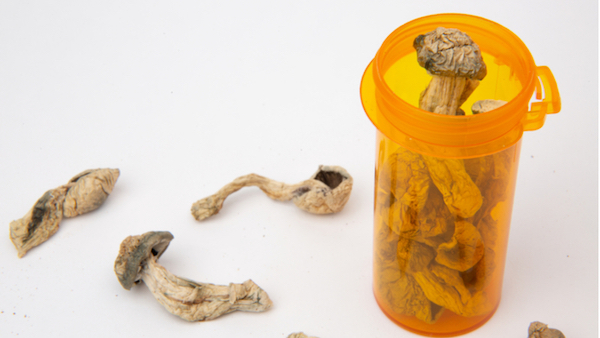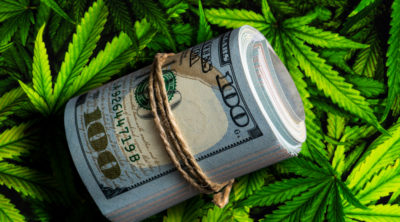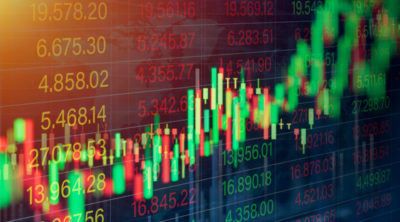For some, “psychedelic” and “medicine” are synonymous, and together, powerful. Investment into psychedelic drug companies is accelerating accordingly. Even before the 2020 election, when Oregon decriminalized all drugs including psychedelic substances and Washington D.C. decriminalized psilocybin mushrooms and entheogenic plants, the phrase “psychedelics industry” was increasingly being uttered by investors, researchers, and entrepreneurs alike. The increasing tendency of the FDA to approve psychedelic drug development is enabling psychedelic research to advance as, in tandem, the social stigma fades.

Psychedelics as Medicine
It would almost be easier to list which ailments psychedelics do not treat than to cover all the conditions for which, anecdotally at least, they can be effective. Paul Stamets describing to Joe Rogan how he stopped stuttering is a prime example of the surprising efficacy of psychoactive substances. Psychedelics, used medicinally, most commonly treat depression, anxiety, PTSD, addiction, and eating disorders.
Psilocybin mushrooms and MDMA are the most studied psychedelic substances to date and each have proven effective at treating multiple maladies. Psilocybin is showing enough medicinal potential that the FDA has already on multiple occasions designated it as a Breakthrough Therapy. LSD, while already used recreationally on a widespread basis, is just starting to be studied by biotechnology companies for medicinal purposes. To highlight a few recent and ongoing studies:
- Psilocybin can treat depression according to this 2020 study, and end-of-life anxiety according to this 2016 study, both conducted by Johns Hopkins researchers;
- MDMA can treat PTSD according to this study by the Multidisciplinary Association for Psychedelic Studies;
- LSD is being studied as a treatment for adult ADHD by the biotechnology company Mind Medicine in partnership with Maastricht University; and
- LSD combined with MDMA is being researched by Mind Medicine to better understand the subjective effects of the combination.
Further off the beaten track, ayahuasca (also known as Grandmother) is a South American psychoactive plant medicine—actually two plants brewed together—known for its healing qualities. Investors take note: it is heavily attracting its own tourism (before the pandemic, anyway) in increasing volumes. Mescaline, DMT, ketamine, and iboga are each powerful psychoactive substances that deserve more attention and study than they have yet received.
Lead Actors in Psychedelic Medicine
The psychedelic medicine industry—one with vast commercial potential—is still emerging. The industry participants are still relatively few in number, with the most prominent including:
- COMPASS Pathways (NASDAQ: CMPS)—with a market cap approaching $1.6 billion—is by far the largest and also notable because it trades on the NASDAQ. COMPASS is researching the potential for psilocybin therapy to help people with treatment-resistant depression.
- Mind Medicine (OTC: MMEDF)—market cap nearing $950 million—first studied ketamine and psilocybin mushrooms and has more recently expanded into researching the medicinal potential of each MDMA, DMT, and LSD.
- Revive Therapeutics (OTC: RVVTF)—market cap north of $120 million—entered the psychedelics sector by acquiring Psilocin Pharma Corporation, which researches both natural and synthetically-derived psilocybin. Revive Therapeutics’ core business focus is cannabis.
- Champignon Brands (OTC: SHRMF)—market cap nearing $54 million—distinguishes itself in the psychedelics marketplace by being a beverage company. It sells a product line of psilocybin mushroom-infused drinks, and has also been recently aquistive in effort to offer clinical ketamine treatments.
- Mydecine Innovations Group (OTC: MYCOF)—market cap nearly $50 million—is studying the efficacy of psilocybin to treat veterans suffering from PTSD. Mydecine recently acquired the digital telehealth platform of the app MindLeap Health, which focuses on the psychedelics industry.
A list of other prominent industry participants is here.
Psychedelics as an Investment Opportunity
The psychedelic medicines industry is predicted to grow rapidly. Between 2020 and 2027, an industry CAGR of 16.3 percent is expected, with the market value forecast to reach nearly $7 billion by 2027. The industry’s value in 2019 was just over $2 billion. Considering, too, the market potentials of other verticals such as psychedelics-focused media, lifestyle products, and consumer goods, the total addressable market for psychedelics is even greater than $7 billion.
Global Mental Health Markets are Large & Underserved
Source: MindMed
Treatment-Resistant Depression Affects 100 Million People Worldwide
Source: COMPASS Pathways
The psychedelics industry is still a relatively illiquid market, with few participants and even fewer publicly-traded companies—although the first psychedelics index already exists.
Lead Investors in Psychedelic Medicine
If the universe of biotech companies working with psychoactive substances is small, then the number of investors with appetites for psychedelics companies is even smaller.
Tabula Rasa Ventures and The Conscious Fund are each focused specifically on psychedelics, while better-known investors including Thiel Capital, New Enterprise Associates, Lightspeed Venture Partners, and Y Combinator have also invested in the sector.
Not Your Grandma’s Psychedelics
Gone are the days when psychedelics are synonymous with turning on, tuning in, and dropping out. Just like cannabis made its foray into the legal market as medicine, psychedelics are doing the same.
Social stigma is still attached to psychedelics and, like the stigma once associated with cannabis, is fading. Perhaps social acceptance of psychedelic substances, whether used recreationally or in therapeutic settings, will occur more slowly. But such acceptance is occurring nonetheless.
Amanda Feilding, Countess of Wemyss and founder of the Beckley Foundation, aptly summarizes the sentiment of many, stating, “After many decades, during which psychedelic research has been stifled by repressive drug laws and stigma, we are finally re-opening the doors to this fertile field. As the potential benefits of responsible use of psychedelics in therapeutic settings are uncovered, and the media awakens to these discoveries, a new enthusiasm for what psychedelics can offer both science and society is taking hold.” And investors are taking notice.
At Nicoya Research, we introduced subscribers to the first publicly-traded psychedelic medicine stock in early 2020 when it was around 40 cents per share. It has gone up nearly 10x since then. This week we added another psychedelic medicine stock to the High Growth Speculator Portfolio.

Article by Nicoya Research contributor by Allie Grace



